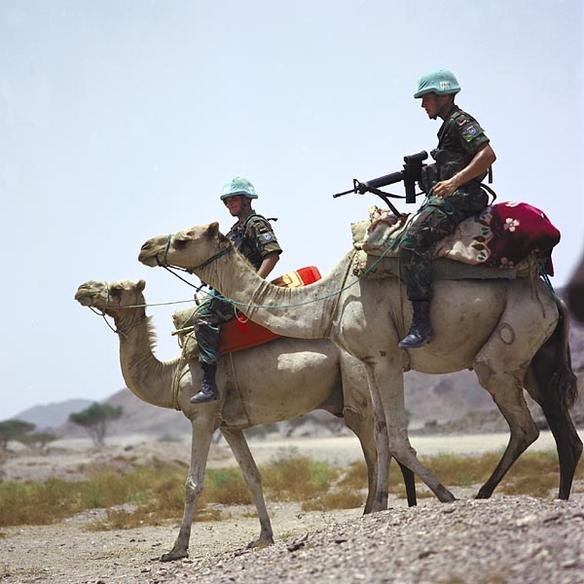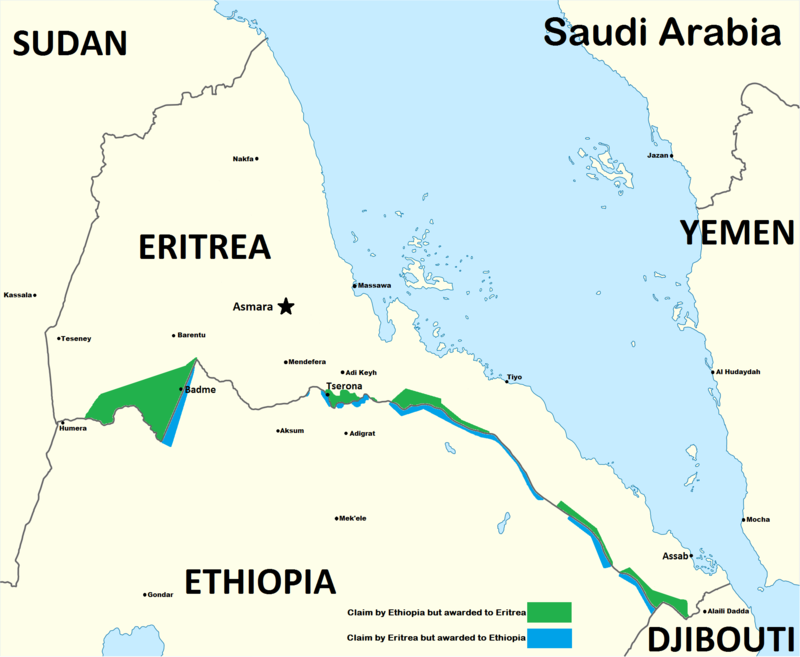3. Socio-anthropological motivations of diaspora from Africa to Europe: the case of the Christian minority in the civil war between Ethiopia and Eritrea – For teachers
Most scholars accept that massive population movements since the middle of the 19th century have generated multiple diasporas that became especially visible in the late 20th century.
In the early 21st century an estimated 10 percent of human beings lived in a diasporic situation. The number of individuals with dual citizenship exploded in a short period of time
Robin Cohen in 1997 published a book titled Global Diasporas an introduction. While making up the term Jewish experience demonstrates how the diasporic condition belongs to all communities that live far away from the homeland.
Cohen reveals that not all migrant groups living in a diasporic situation, because “A strong
or renewed tie to the past or a block to assimilation in the present and future must exist to permit a diasporic consciousness to emerge” (Cohen 1997, p. 16). Other groups may instead merge with the culture and religion of the host country losing their specificity and disappear as a separable ethnic group.
Common features
Cohen to address the topic of "diaspora" uses the expression "common features" like the descriptive tool needed to delineate any one diaspora. The elements that may be present in different degrees and in relation to specific contexts are:
1. Dispersal from an original homeland, often traumatically, to two or more foreign regions;
2. Alternatively or additionally, the expansion from a homeland in search of work, in pursuit of trade or to further colonial ambitions;
3. A collective memory and myth about the homeland, including its location, history, suffering and achievements;
4. An idealization of the real or imagined ancestral home and a collective commitment to its maintenance, restoration, safety and prosperity, even to its creation;
5. The frequent development of a return movement to the homeland that gains collective approbation even if many in the group are satisfied with only a vicarious relationship or intermittent visits to the homeland;
6. A strong ethnic group consciousness sustained over a long time and based on a sense of distinctiveness, a common history, the transmission of a common cultural and religious heritage and the belief in a common fate;
7. A troubled relationship with host societies, suggesting a lack of acceptance or the possibility that another calamity might befall the group;
8. A sense of empathy and co-responsibility with co-ethnic members in other countries of settlement even where home has become more vestigial;
9. The possibility of a distinctive creative enriching life in host countries with a tolerance for pluralism. (Idem p. 17)
Types of diaspora
Another tool that uses Choen are the ideal types Weber: “By using a qualifying adjective – victim, labour, imperial, trade and deterritorialized – I have evolved a simple means of typologizing and classifying various diasporas, not by ignoring what they share in common, but by highlighting their most important characteristics (Idem p. 18).
The first category "victim" includes many contemporary refugee groups. The category “Identified the Jewish, Irish, Palestinian, African and Armenian diasporas, which, through self-description or construction by others, can be abelled with the preceding adjective of ‘victim’” (Idem p. 39). For exemple like the Christian minorities fleeing religious persecution or civil war.
The second category "labor" refers to the job search, including Chinese, Turks, Italians, North Africans. Another expression is synonymous “Proletarian diaspora”.
The third category "imperial" is about the exercise of power. Nearly all the powerful nation-states, especially in Europe, established their own diasporas abroad to further their imperial plans. The Spanish, Portuguese, Dutch, German, French and British colonists fanned out to most parts of the world and established imperialism.
The fourth category is "trade". Trade diasporas in the classical world to modern western became familiar, such as the Phoenicians. The term 'trade diasporas' was first given a reasonably precise definition by Abner Cohen, who insisted that there had to be evidence of moral community if the notion was to carry conviction. A trade diaspora was 'a nation of socially interdependent but spatially dispersed communities'.
The fifth and final category is the "deterritorialized diaspora". Choen wrote: "Throughout my account I have suggested that ethnicities and homelands have to be considered as multifaceted, historically contingent and socially constructed entities. In the case of Jews, Parsis, Sindhis and Sikhs, for example, it is unclear to what extent their religions and historical experiences, assumed jointly or separately, are common ancestries mobilized to determin their collective identities over time. Also there may be wide differences between self-descriptions (the emic dimension) and characterizations by outside observers (the etic dimension)”(Idem p. 123).
Present perspectives
Today for the most part such individuals and groups combine identities, feeling that they belong to both home and host countries and they can mix both easily in their daily life in a nonexclusive and productive manner.
Many people claim to be living in a diaspora, to be part of a minority, or to have ancestors from a different ethnic group from that of the majority. They attach a positive value to this, viewing it as adding a premium of identity rather than a negative stigmatization. Individuals of the present day are able to keep in touch with relatives and maintain contacts abroad and at home, as well as to remain connected to cultural, cognitive, and symbolic values of remote places. Information and communication technologies have obviously facilitated this new proximity, but host countries evolution from homogeneous conceptions of citizenship toward more pluralistic, multiethnic approaches has also been crucial.
Source analysis and comment
As an example of type “victim diaspora” are sources related to the civil War Eritrea- Ethiopia. Often ethiopian and eritrean Christians are commonly called “Cops” because their churches were born under the jurisdiction of the Coptic Orthodox Church of Alexandria, but they are not considered Copts, because they are not ethnic Egyptians (P.4). The term “Copt” is however a misnomer, since both the Ethiopian and the Eritrean Churches, although daughter churches of the Church of Alexandria, are currently autocephalous churches (autocephaly meaning self-headed, is the status of a hierarchical Christian church whose head bishop does not report to any higher-ranking bishop, used especially in Eastern Orthodox and Oriental Orthodox churches). In 1959, the Ethiopian Orthodox Tewahedo Church was granted its first own Patriarch by Pope Cyril VI. Since ancient times had developed dimensions of spirituality and liturgical practices specifications that differ significantly from those of the Egyptian Coptic tradition.
Christianity is the majority religion in Ethiopia, followed by Islam and local cults. it is interesting to consider the African Christianity because they are not known because of the stereotype of the supremacy of Islam.
Intercultural and interdisciplinary information
(History)
A type of imperial diaspora present in European history is colonialism.
Colonialism
Colonialism is a political-economic phenomenon whereby various European nations explored, conquered, settled, and exploited large areas of the world. Colonialism is the establishment, exploitation, maintenance, acquisition and expansion of colonies in one territory by people from another territory. It is a set of unequal relationships between the colonial power and the colony often between the colonists and local population. The age of modern colonialism began about 1500, following the European discoveries of a sea route around Africa’s southern coast (1488) and in America (1492). With these events sea power shifted from the Mediterranean to the Atlantic and to the emerging nation-states of Portugal, Spain, the Dutch Republic, France and England. By discovery, conquest and settlement these nations expanded and colonized throughout the world, spreading European institutions and culture.









